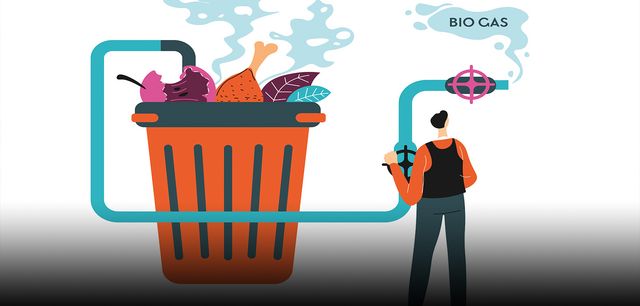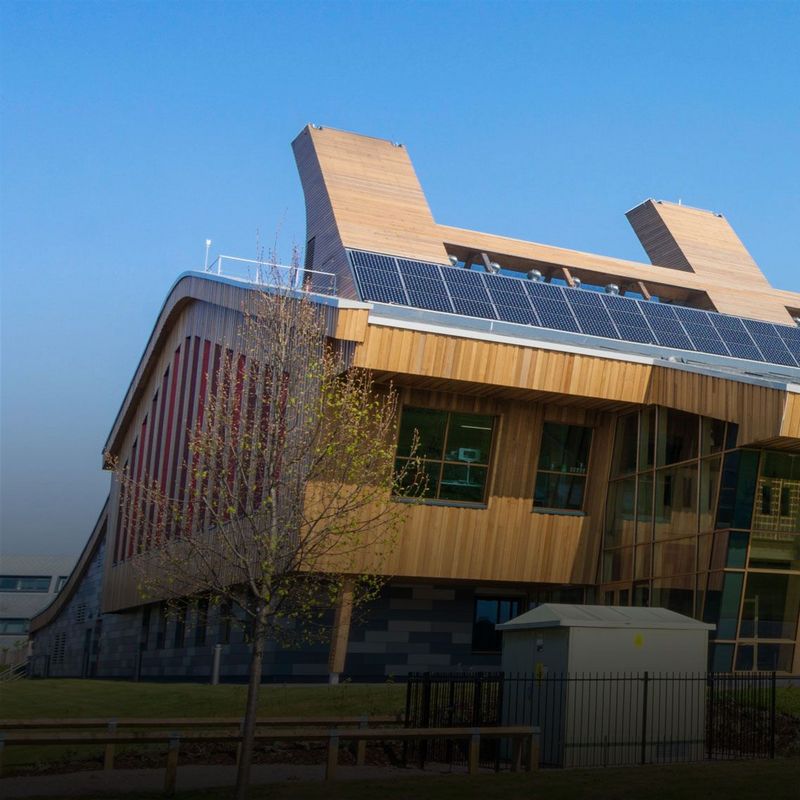20. May 2021
One gas in particular escapes from rice fields, the stomachs of cattle and coal mining: methane. This highly flammable gas has not attracted a great deal of attention in the debate about global warming. And yet, it is considerably more harmful to the climate than CO2 – and has reached new levels of concentration in the atmosphere in recent years.
Among the greenhouse gases, methane is the overweight heavyweight boxer: it doesn't hang around for long, but it packs a hell of a punch. The share of methane, the chemical formula for which is CH4,,in global warming is significantly lower than that of carbon dioxide. And, unlike CO2, it degrades in nine to 15 years – but it does 28 times as much damage. This makes it more worrying that the amount of methane in the atmosphere has increased significantly over the past decade.
Methane is produced whenever biological material decomposes in aerobic environments: for example, in wetlands such as swamps or rice fields, in the stomachs of cows, sheep and goats, in landfills and in the extraction of coal and natural gas. Fossil fuels were, after all, formed in this way millions of years ago by plants and small organisms in swamps and seas. Natural gas consists almost entirely of the colourless and odourless methane.
Methane scales threatening new heights
Like CO2, methane is a natural component of the atmosphere – albeit at a much lower concentration. And, as with carbon dioxide, its climate-damaging career began with industrialisation. The use of fossil fuels and the intensification of agriculture have led to continuous increases in methane emissions. More than half of the methane in the atmosphere is now man-induced. At the beginning of the 2000s, the concentration of CH4 gradually stabilised. However, since 2007 climate scientists have once again observed a significant increase.
According to projections, almost 600 million tonnes of methane were in the atmosphere in 2017, more than half of which were due to human activities. A trend that continued in 2018 and 2019, as a group of researchers led by Rob Jackson of California’s Stanford University found in two studies. Compared to the average for the years 2000 to 2006, annual emissions increased by around 50 million tonnes. This represents an increase of nine percent. The concentration of methane in the air is now about 2.5 times higher than before industrialisation. This translates into a higher concentration than at any time in the last 650,000 years.
Climate targets at risk
If methane emissions are not significantly reduced, the Paris Climate Accord’s goal of keeping the global average temperature increase to only 1.5 to two degrees is unlikely to be achieved, the scientists warn. Instead, the Intergovernmental Panel on Climate Change’s pessimistic forecast on climate change, which assumes a temperature increase of three to four degrees by the end of the century, could become a reality. While methane emissions from wetlands, volcanoes and other natural sources have changed little since 2007, man-induced emissions have increased significantly. According to the authors, this is primarily due to the use of fossil fuels, livestock farming, rice cultivation, landfills, industry and transport. Three regions of the world have recorded a particularly marked rate of increase: Africa and the Middle East, China and South Asia, and Oceania. The main factors here are agriculture and the use of fossil fuels. These have also significantly increased emissions in the US. In particular, the extraction and transport of natural gas in the United States is generating an annual increase of 4.5 million tonnes of methane.
Europe is the only region in the world whose methane emissions fell slightly during the investigation period. “Guidelines and better management have reduced emissions from landfills, manure and other sources here in Europe,” co-author Marielle Saunois of the French Université de Versailles Saint-Quentin-en-Yvelines told dpa. Moreover, Europeans are now eating less beef and more poultry and fish. By way of consolation, the researchers have not yet been able to determine an increase in methane emissions from the thawing of permafrost soils. But that is likely to change as global warming gathers pace: Soils in Siberia and North America store huge amounts of carbon that would escape into the atmosphere as carbon dioxide and methane if these soils were to thaw. Their thawing is considered a tipping point, an event that would trigger a climate-altering chain reaction that could not be stopped by human intervention.
Short life as an opportunity
From the researchers’ point of view, however, the mixture of massive climate impacts and the relatively short life of methane also has a great advantage. Since it degrades in the atmosphere within a decade, a reduction in man-induced emissions could have a rapid effect. A strategic use of today’s technologies could reduce methane emissions by half by 2030, US scientists led by climate scientist Ilissa Ocko have calculated. The immediate implementation of appropriate measures would slow global warming by 30 percent. These include, for example, the containment of gas and oil leaks, the flooding of decommissioned coal mines, the seasonal rather than permanent irrigation of rice fields, the fermentation of manure in biogas plants, methane-reducing feed additives for cattle and consistent waste separation, in which no more organic waste ends up in landfill.
According to the researchers, the rapid use of such methods could prevent almost a quarter of a degree’s worth of warming by mid-century. By the end of the century, this could be more than half a degree. The slow adoption of measures, in contrast, is expected to cause an additional temperature increase of 0.1 degrees by 2050. If we wait until the middle of the century, the climate could warm by an additional fifth of a degree by then. That doesn’t sound like much, but, given the 1.5-degree target, it would be much more than the oft-quoted drop in the already full bucket.
What’s being done by policymakers?
US President Joe Biden announced during his campaign that he would focus on methane reduction. The coronavirus pandemic has triggered a wave of bankruptcies in the US oil and gas industry, leaving behind abandoned and sometimes poorly secured production sites. But even before the crisis, the then government in Washington estimated that no more oil or gas was being extracted from over three million wells. Nearly two million of them have not been securely sealed. This would result in the emission of methane equivalent to the exhaust gas from 1.5 million cars. As recently as last year, the Trump administration overturned requirements requiring companies to seal their leaks. The Democrats have now reversed those changes. As a next step, Biden wants to put money into natural gas production infrastructure to avoid leaks and seal off abandoned oil and gas wells. However, the originally envisaged nationwide ban on fracking has now been taken off the table. Instead, Biden merely intends not to approve any new permits for exploration on state-owned land.
© GettyImagesMany gas and oil production facilities are in poor condition, methane can leak.
European methane strategy
The EU has also presented a strategy to curb methane emissions as part of its Green Deal. Methane accounts for ten percent of all greenhouse gas emissions in Europe, more than half of which is attributable to agriculture. It is true that only five percent of global emissions are generated in the EU – at the same time, however, it is the world's largest importer of natural gas. And most of the methane which escapes during extraction and transport goes into the atmosphere before the gas reaches Europe. On the one hand, the methane strategy is accordingly intended to reduce emissions in the EU by 35 to 37 percent by 2030 compared to 2005, while at the same time reducing emissions in the supplier countries.
The energy sector will be subject to a “commitment to better detect and repair leaks in the gas infrastructure”. Regulations restricting the routine flaring and discharge of natural gas will also be considered. The European Commission intends to present the first legislative initiatives on this issue by 2021 at the earliest. Building on this, the EU intends to examine possible targets for reducing methane emissions from natural gas, coal and oil consumed or imported in Europe.
In the waste industry, the disposal of biological waste is to be reduced to a minimum and methane-containing landfill gas used more intensively in energy production. To reduce agricultural emissions, for example, manure will be increasingly converted into biogas, and other feed used. Research is being carried out worldwide into methane-reducing supplements for cattle and other ruminants. For example, additives from red algae, garlic and bitter oranges are considered promising.
For environmental organisations such as the European Environment Bureau, the EU’s approach to agriculture is too lacking in ambition. Instead, it is calling for specific conditions at the level of individual farms. On the one hand, it will be necessary to make full use of the mitigation potential of existing technologies and methods. On the other, we would also have to reduce the production and consumption of meat and dairy products at the same time to reduce our methane emissions in the long term.



